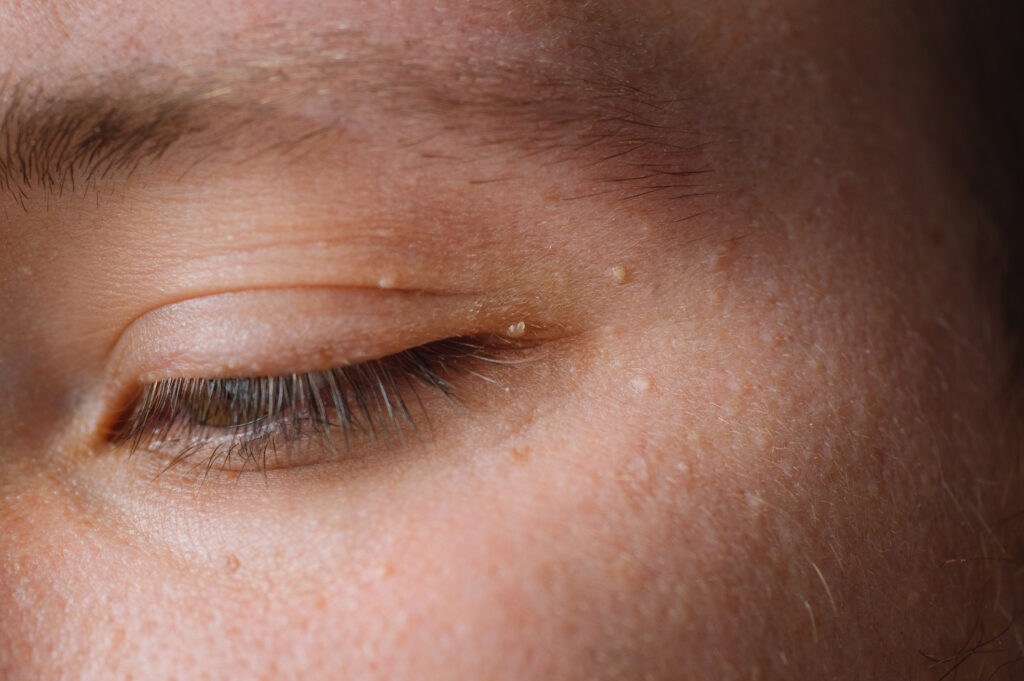What’s This Thing on My Skin?

Whenever you notice a strange lump, bump, or mark on your skin, it can be disconcerting. If you see something unfamiliar, the first thing to do is take a deep breath and remember that everything is not cancer. Here, we offer some examples of common skin issues, so you can get a better understanding of what you may be seeing on your skin.
- Moles can be flat or slightly raised, round spots, and come in many colors. They’re typically brown or black, though, and very common. Moles are not usually a cause for concern, but if they change in size, shape, or color, it could mean skin cancer. Consult a dermatologist for any of these changes, or if your mole bleeds, oozes, itches, hurts, or turns scaly. If you have a lot of moles, inspect them regularly and document their appearance so that you’ll notice changes quickly.
- Cysts are flesh-colored, keratin-filled sacs under the skin, and are typically benign. They grow when a hair follicle or oil gland becomes clogged or damaged, and they don’t really require medical attention unless they leak, are painful, or bother you. However, it’s good to have them checked so that your doctor can rule out anything serious.
- Skin tags form where your skin surfaces rub together. Small growths of skin that bulge at the end, they’re often found in the armpits, the groin area, or on the neck. Skin tags don’t require medical attention, but if they’re bothering you or bleeding, your doctor can remove them by freezing, cutting, or using a mild electric current.
- Hives are often a sign of an allergic reaction. They can also be caused by infection, sun exposure, exercise, illness, or stress. These itchy, swollen welts can vary in size, and sometimes they merge into larger welts. They generally fade within a day, but new ones may appear as the older hives fade. Antihistamines and steroids can help with hives, and so can a cool shower or cloth, if the case is mild. Hives go away on their own, but it can take days or even weeks, so if you know what triggers your hives, try to avoid it.
- Keloids are overgrown scar tissue. After the skin has healed, a keloid can continue to grow beyond the bounds of the wound, and they often form on earlobes, shoulders, cheeks, chest, or the upper back. They’re more common on dark skin, and while they’re not harmful, they can be removed if they bother you. Keloids can often be avoided if you don’t get piercings or unnecessary surgeries.
- Warts are caused by the human papilloma virus (HPV), warts can appear on your hands, feet, face, and limbs. They’re contagious and can be spread to new areas of skin as well as to other people by touch. Treatment stops them from spreading, but they sometimes go away on their own. Contrary to popular thought, warts don’t have seeds. If a wart has little black spots in it, those spots are the ends of small blood vessels. Over the counter remedies are sometimes successful, but a dermatologist can treat warts effectively by signaling the immune system to eradicate the virus.
- Lipomas are round, moveable lumps under the skin. These fatty masses typically appear on the neck, shoulders, back, or arms, and feel soft, doughy, or rubbery. Lipomas are usually harmless, but if you have one that grows quickly or causes you pain, it could be cancerous. It’s wise to check in with your doctor to make sure.
- Dark spots on the face could be melasma. Melasma can be brown, blue-gray, or tan, and is common in women between the ages of 20 and 50 years old. This condition can be triggered by pregnancy, hormone replacement therapy, birth control pills, and anti-seizure medications. Your race and family history can also be risk factors. Sunlight or light from a tanning bed can bring out melasma, and it usually occurs in the center of the face or on the cheekbones or jawbone. Fortunately, your dermatologist can treat melasma.
Many of these things will resolve on their own, but don’t rely solely on your own observations when it comes to caring for your skin. It’s very important to schedule an annual appointment with your dermatologist, so that your skin can be thoroughly inspected by someone who can accurately identify every little bump or mark. Then too, if it actually is cancer, annual skin exams can catch it early enough for successful treatment.
Whenever there’s something new on your skin, it’s smart to make an appointment with your dermatologist. Swinyer-Woseth Dermatology is committed to providing superior, professional skin care in a manner that’s practical, efficient, and compassionate. With over 30 years of experience providing dermatological services in Salt Lake City, we provide a variety of services, from cosmetic skincare to treatment for skin cancer. Our team of board-certified dermatologists and licensed cosmetic service providers are here to provide you the care you need in a comfortable, professional atmosphere. Call (801) 682-4715 or contact us through our website.
